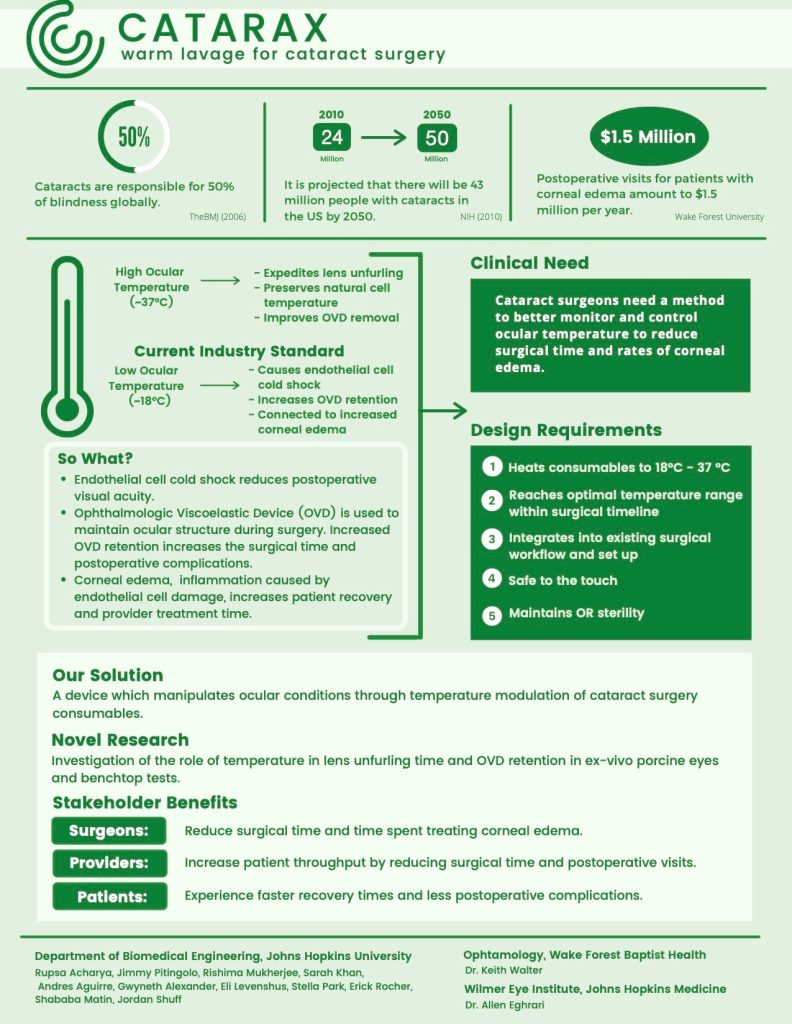Temperature control of ocular environment for improved cataract surgery outcomes.
Team: BME Design Team: Catarax
Program:
Biomedical Engineering
Project Description:
Cataracts are the clouding of the ocular lens and is the leading cause of blindness worldwide. In the USA alone, 24.4 million patients suffer from cataracts, a figure that is expected to grow to 43 million people by 2050. Cataracts have no intermediate, non-invasive solutions, so surgery is a must for patients to recover their vision. Cataract surgery is one of the most commonly performed surgical procedures and cataract surgeons need a method to better monitor and control ocular temperature to reduce surgical time and rates of corneal edema. Evidence suggests colder intraocular temperature may lead to impaired enzymatic function, which results in post operative complications such as corneal edema. Extra post-operative visits for patients with corneal edema amounts to $1.5 million per year. Due to the lump-sum reimbursement practices, these extra visits are not reimbursed and take time away from seeing new patients. Furthermore, temperature changes can also slow down different steps in the surgery, which incurs additional costs at the expense of the provider. Cutting surgical time would reduce the total provider cost for each procedure, and allow higher procedure volume per day. To mitigate temperature-related complications in cataract surgery, Design Team 1 is creating a system to control the temperature of the ocular environment.This allows for the surgeon to speed up specific steps in the procedure and a warmer ocular environment reduces the risk of corneal edema.
Team Members
-
[foreach 357]
[if 397 not_equal=””][/if 397][395]
[/foreach 357]
Project Mentors, Sponsors, and Partners
Project Mentor: Dr. Allen Eghrari, M.D., M.P.H.
Project Mentor: Dr. Keith Walter, M.D.
Faculty Mentor: Shababa Matin, M.S.E.
Dr. Shameema Sikder, M.D.
Teaching Assistant: Jordan Shuff
Course Faculty
-
[foreach 429]
[if 433 not_equal=””][/if 433][431]
[/foreach 429]
Project Links
Additional Project Information
Project Photo



